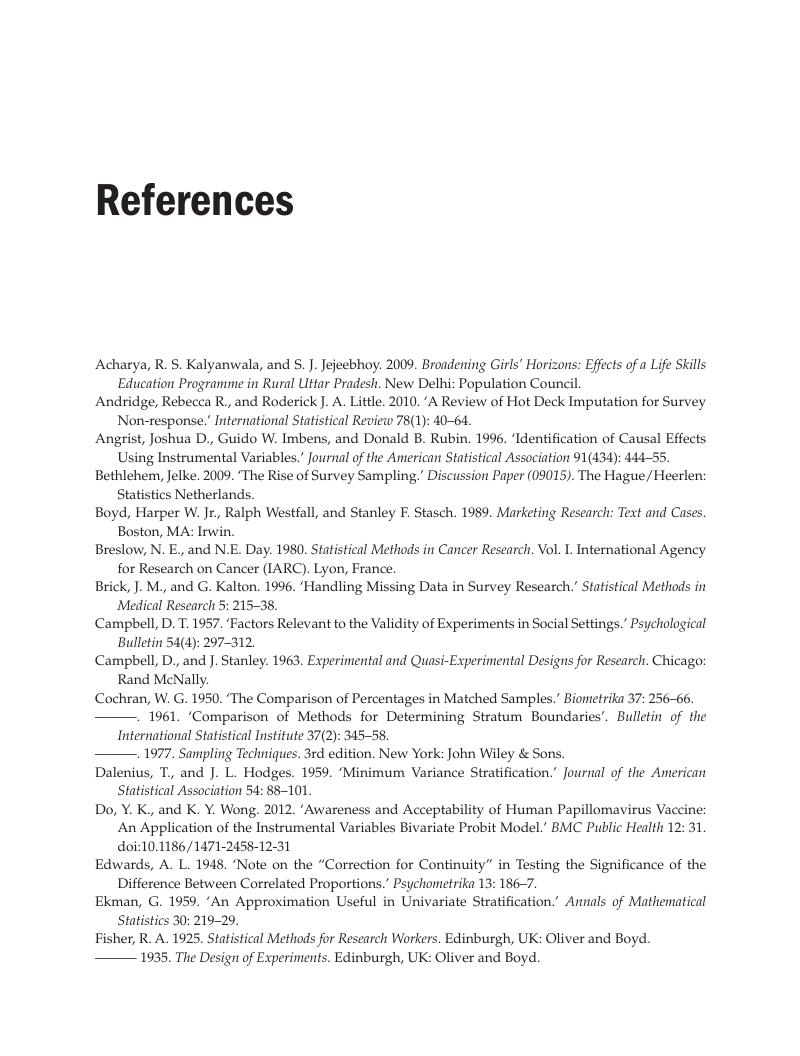Book contents
- Frontmatter
- Dedication
- Contents
- Figures
- Tables
- Foreword
- Preface
- Acknowledgments
- 1 Introduction to Sample Survey Designs
- 2 Basic Sampling Designs
- 3 Multi-stage Designs
- 4 Probability Sampling under Imperfect Frame
- 5 Tackling Non-Sampling Errors
- 6 Introduction to Evaluation Design
- 7 Designs for Causal Effects: Setting Comparison Groups
- 8 Designs for Causal Effects: Allocation of Study Units
- 9 Statistical Tests for Measuring Impact
- 10 Case Studies
- References
- Index
- References
References
Published online by Cambridge University Press: 05 April 2016
- Frontmatter
- Dedication
- Contents
- Figures
- Tables
- Foreword
- Preface
- Acknowledgments
- 1 Introduction to Sample Survey Designs
- 2 Basic Sampling Designs
- 3 Multi-stage Designs
- 4 Probability Sampling under Imperfect Frame
- 5 Tackling Non-Sampling Errors
- 6 Introduction to Evaluation Design
- 7 Designs for Causal Effects: Setting Comparison Groups
- 8 Designs for Causal Effects: Allocation of Study Units
- 9 Statistical Tests for Measuring Impact
- 10 Case Studies
- References
- Index
- References
Summary

- Type
- Chapter
- Information
- Statistical Survey Design and Evaluating Impact , pp. 255 - 259Publisher: Cambridge University PressPrint publication year: 2016



